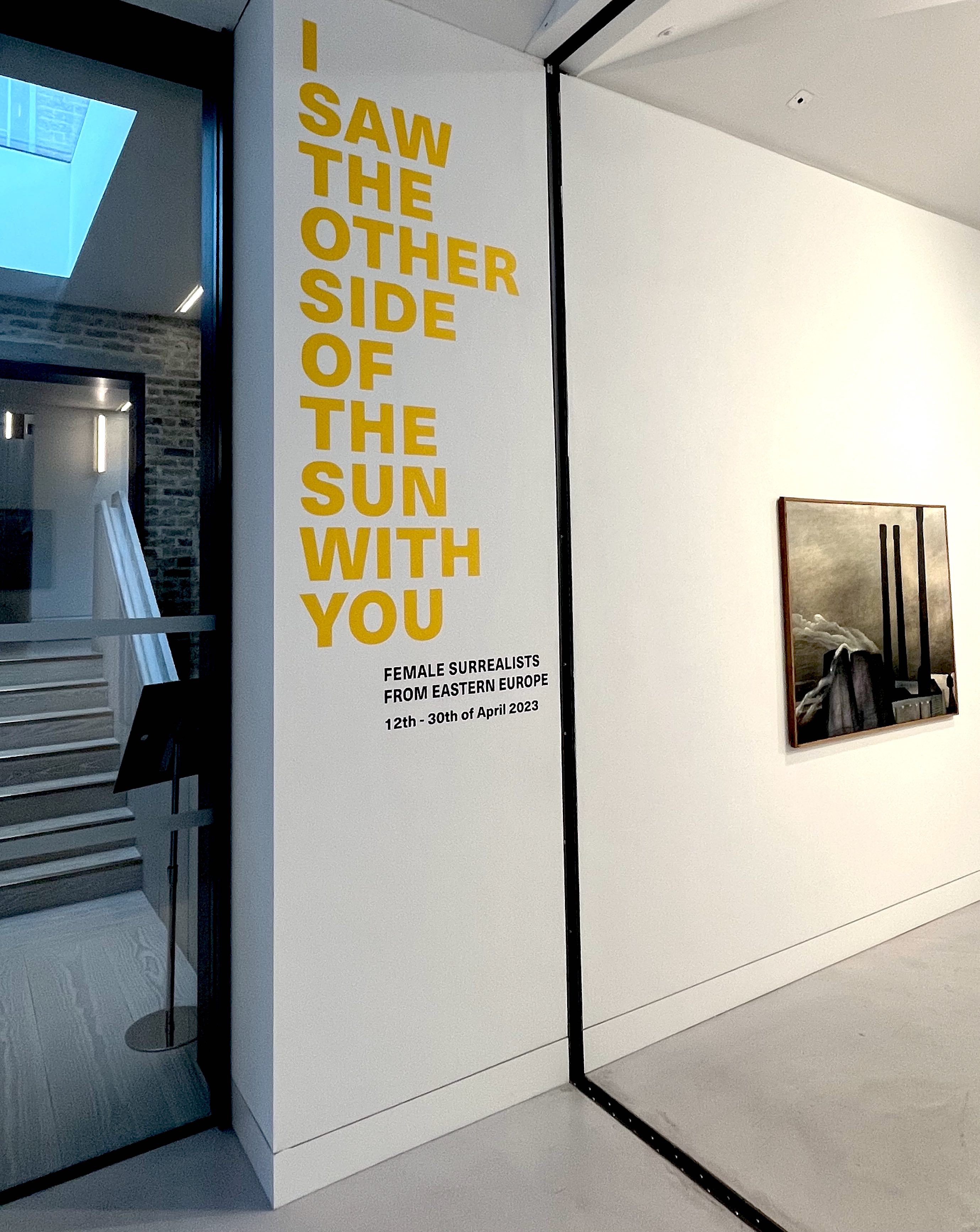I saw the other side of the sun with you, is an important and impressive exhibition gathering and showing surrealist art from the 1930’s to the present day by women artists from Eastern Europe.
Commissioned and presented by European ArtEast Foundation, curated by Anke Kempkes, women Surrealists from Poland, the former Czechoslovakia (The Czech Republic), the former Yugoslavia (Serbia, Macedonia), Ukraine and Slovakia, adorn the walls in a space at Cromwell Place in London.
With over 50 works from an array of women artists, the exhibition features the development of surrealism from the 1930s to its present-day revival, focusing on women’s contribution to the movement, relaying socio-political notions through their art.
In the interwar period, women artist found that surrealism was a way to communicate on issues regarding gender and sexuality, and in the aftermath of WWII, it was a channel for them to try and understand their traumatic experiences, the atrocities, escaping or living under Nazi-occupation, becoming refugees, the notion of memory, or the disillusionment of living under a Stalinist Communist regime.
The contemporary artists on display in the exhibition have chosen a post-surrealist language for their art, creating works in regards to gender and feminism or on the consequences of war in Ukraine.
It is heartbreaking to read about the atrocities the artists went through. Their art shown is moving, compelling and strong, the exhibition constitutes as a reminder of women’s contribution to the surrealist movement, and highlights how it was and is a way to speak about important notions and harrowing experiences that should never be forgotten.
Below are some of the artists, their artworks on display in the must see exhibition, I Saw The Other Side Of The Sun With You.
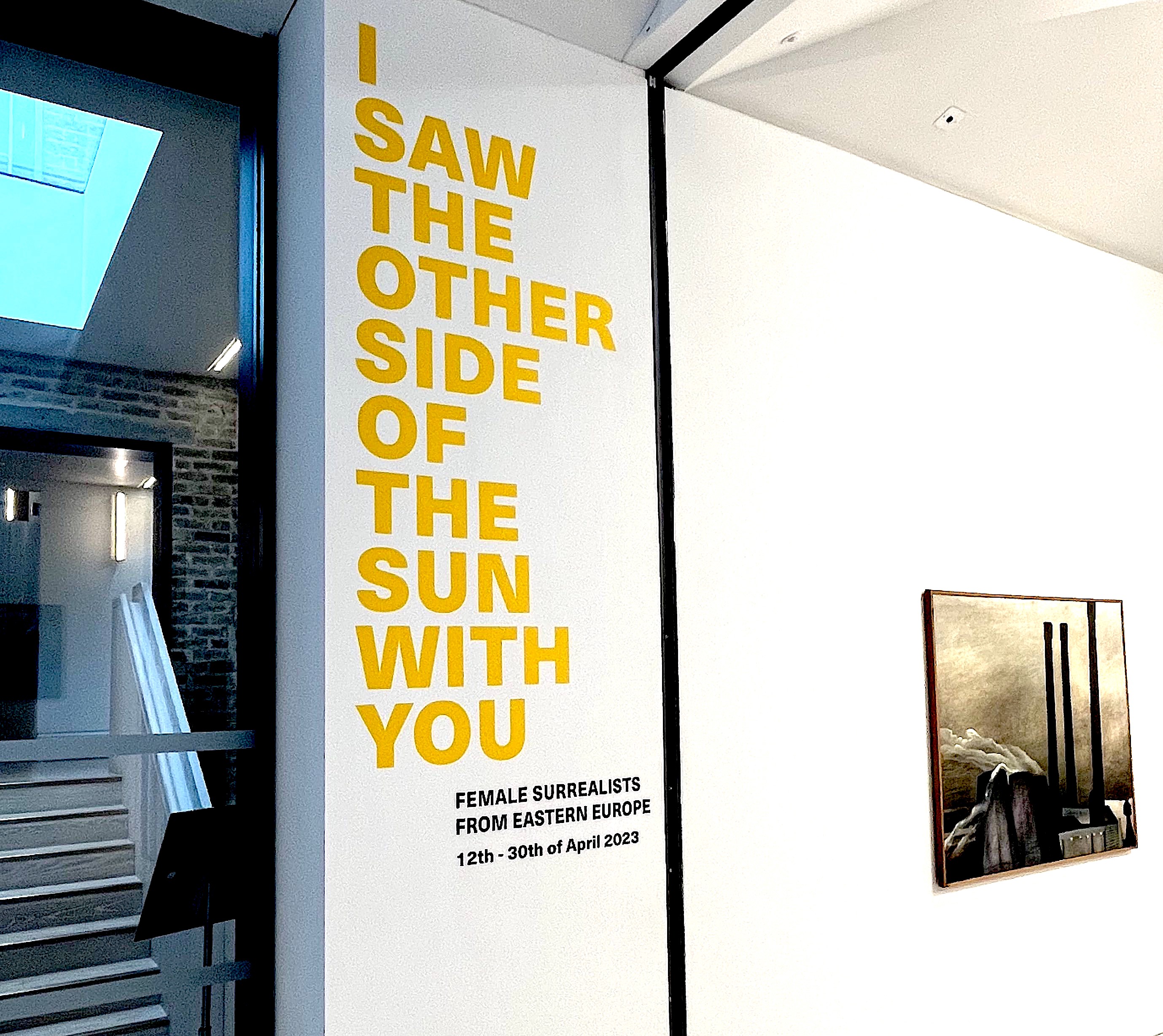

Maria Anto, W Kawiarni (At the Café), 1960, Oil on canvas, 69 x100 cm, Iokal_30 Warsaw

Maria Anto, Dom Stońce (Home Sun), 2002, Oil on canvas, 99 x 129 cm, Iokal_30 Warsaw
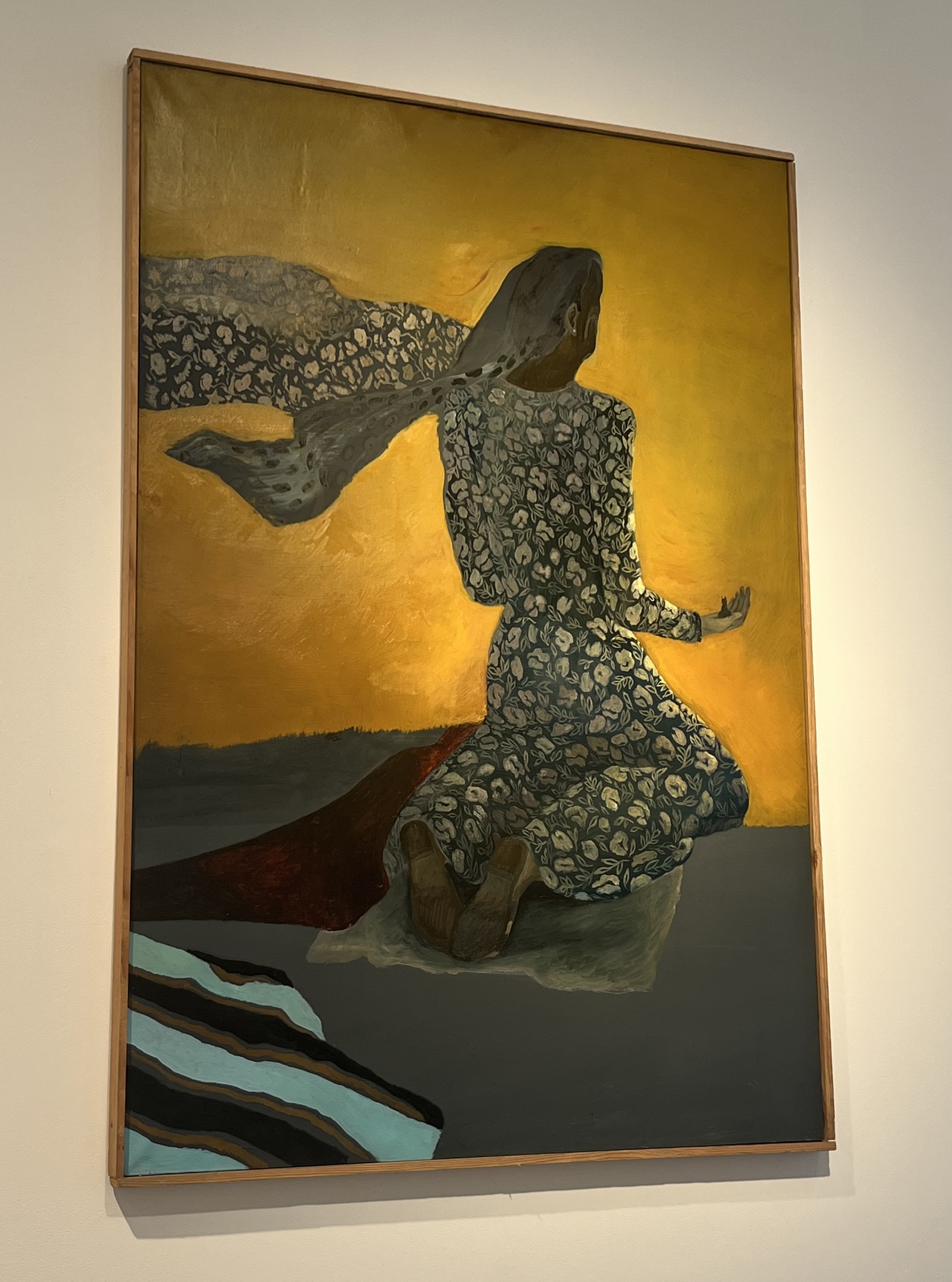
Maria Anto, Požegnanie (Farewell), 1998, Oil on canvas, 130 x89 cm, Iokal_30 Warsaw

Maria Anto (1936-2007, Warsaw), survived Nazi-occupation in Poland, rescued by partisans from a train to Auschwitz. Her childhood was spent in occupied Warsaw, with the death of her relatives marking her life and her art. Paintings about industrial sites in the Warsaw region, autobiographical paintings with female sitters, animals, and works documenting her illness after a severe stroke.
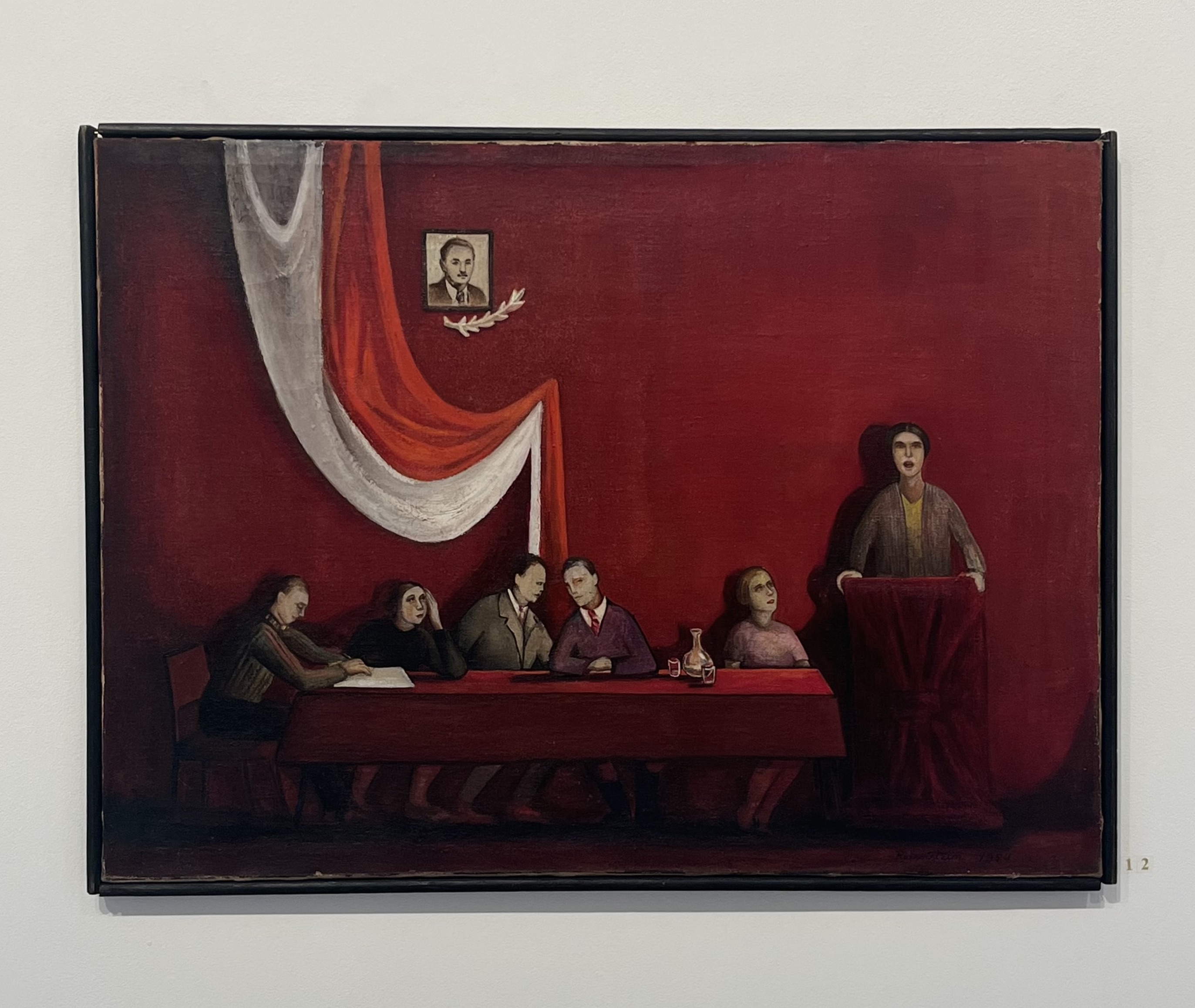
Erna Rosenstein, Untitled (The artist getting defended in front of a meeting of the Union of Polish Artists and Designers),1954, Oil on canvas,
47.5 x 64 cm. Private Collection.
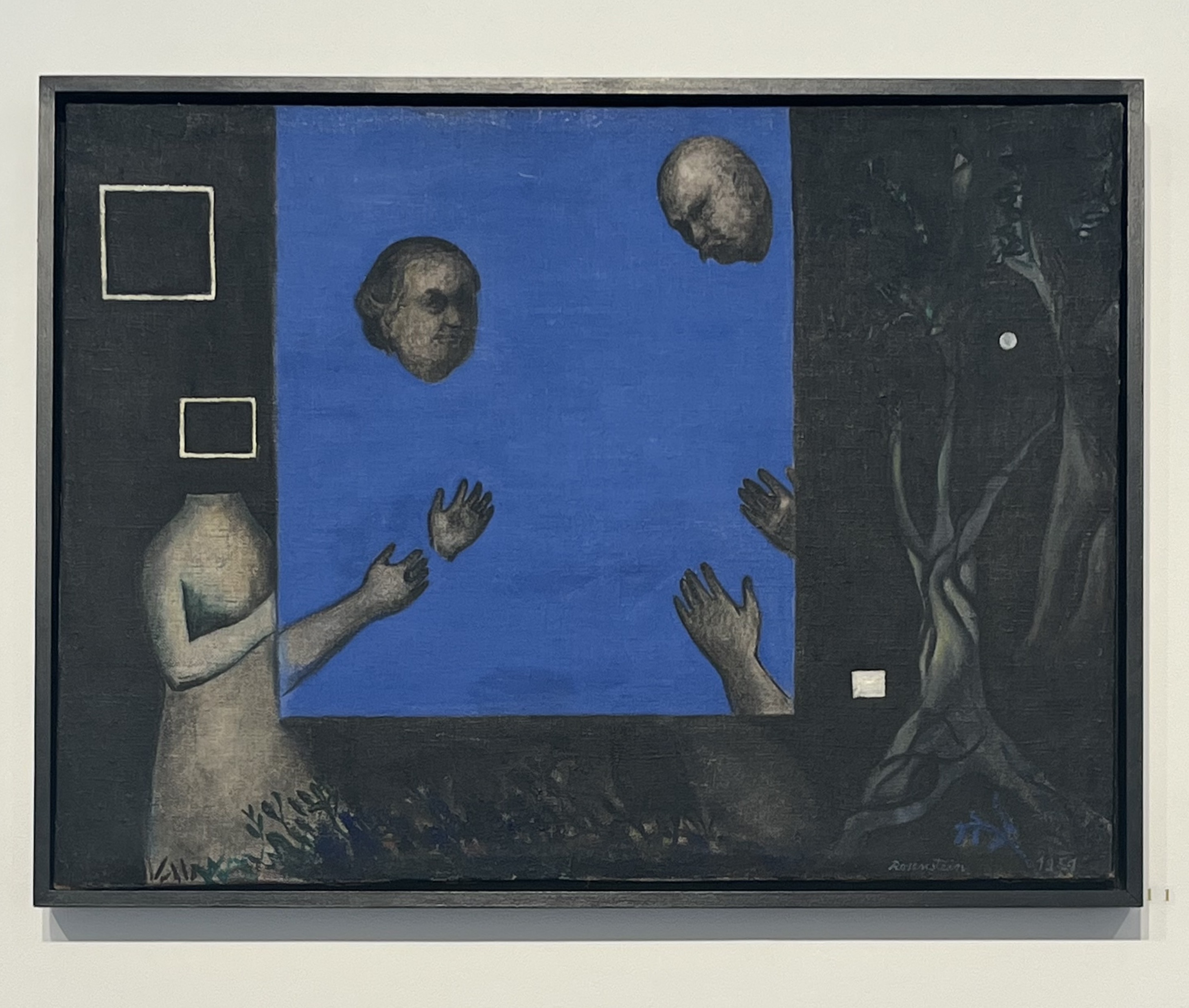
Erna Rosenstein, Ekrany (Screens), 1951, Oil on canvas, 48 x 64 cm, Collection MS Muzeum Sztuki, Lodz
Erna Rosenstein (1913, Lviv, Ukraine - 2004, Warsaw), a Polish-Jewish painter and poet, who endured the ghettos and persecution under Nazi-occupation. She witnessed a Polish bandit stab to death her parents as they searched for a safe place in the Polish forests. She herself survived though was severely wounded. Her art took on a surrealist language, going against the imposed Socialist-Realism doctrine. She painted about her trauma and the socio-political upheavals in the new Communist regime. Her painting Ekrany (Screens) speaks of memory and trauma.
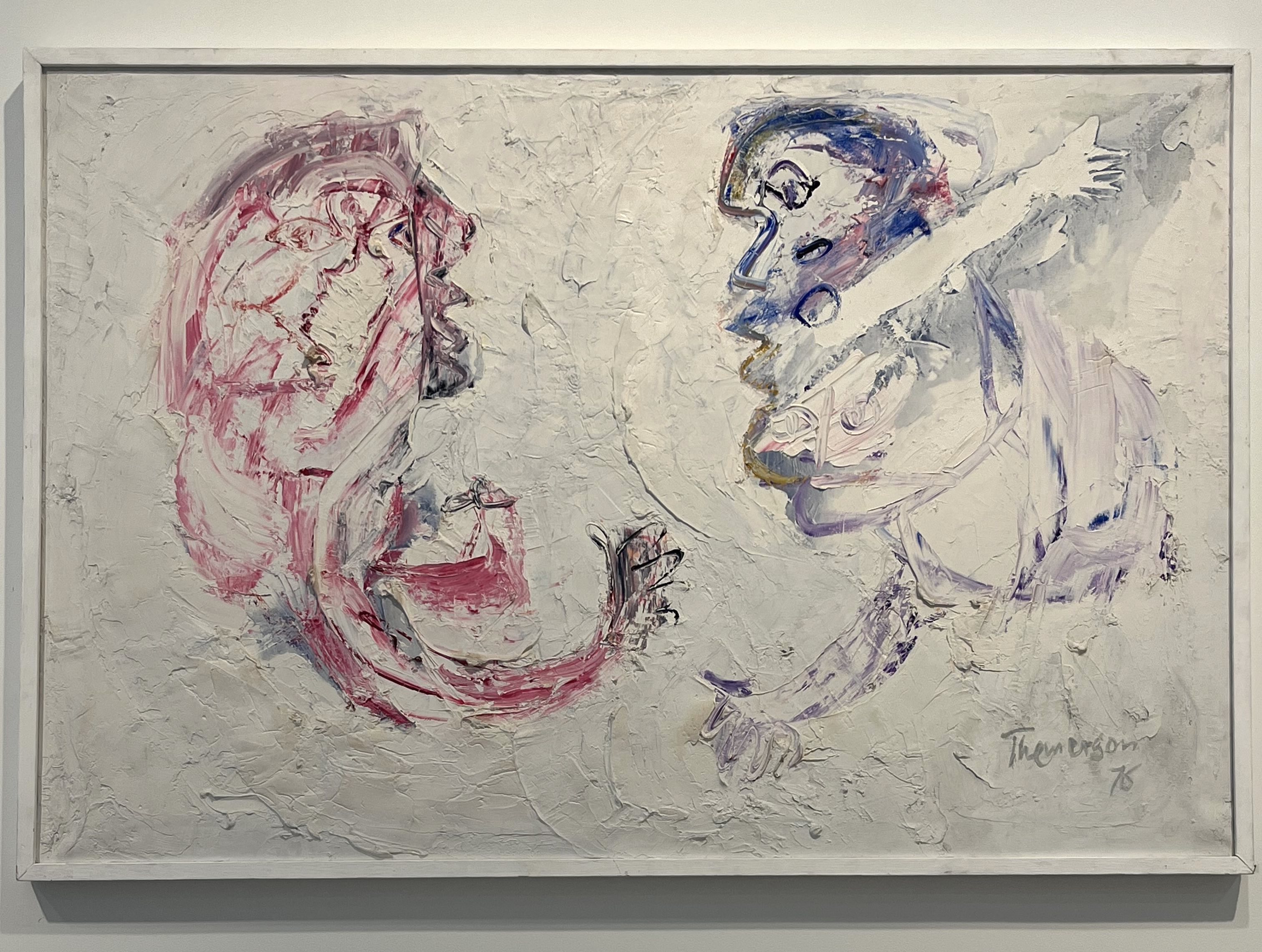
How can they ever agree if one is blue and another is pink?, 1976, Oil on canvas, 102 x 151.5 cm, Themerson Estate
Franciszka Themerson (1907, Warsaw - 1988, London), was seconded to the Polish government-in-exile as a cartographer at the outbreak of WWII, first in France and then from 1940 in London. Her drawings showed the violent events from the war, and her partner's escape from Central Europe under Nazi-occupation.

Teresa Žarnower , Untitled, 1945, Gouache and ink drawing on paper, 34.8 x 50.4 cm, Collection MS Muzeum Sztuki, Lodz
Teresa Žarnower (1897, Warsaw - 1949 New York), designed socialist and anti-fascist photo montages and posters. In 1937 she left Poland for Paris, Spain, Portugal, and Canada, eventually arriving in the US as a refugee. Being a witness to the atrocities of the war and of the Holocaust, the artist's paintings changed in the 1940's, moving towards dark surreal figuration and abstraction, depicting violent scenes, the figure exposed to devastation, in imprisonment, and the female as isolated. The trauma of war and becoming a refugee, spread across her work and affected her life. She was found dead in her apartment, by her side a letter from her brother having survided WWII in Russia, with some sources suggesting it was of suicide after financial hardship and loneliness.
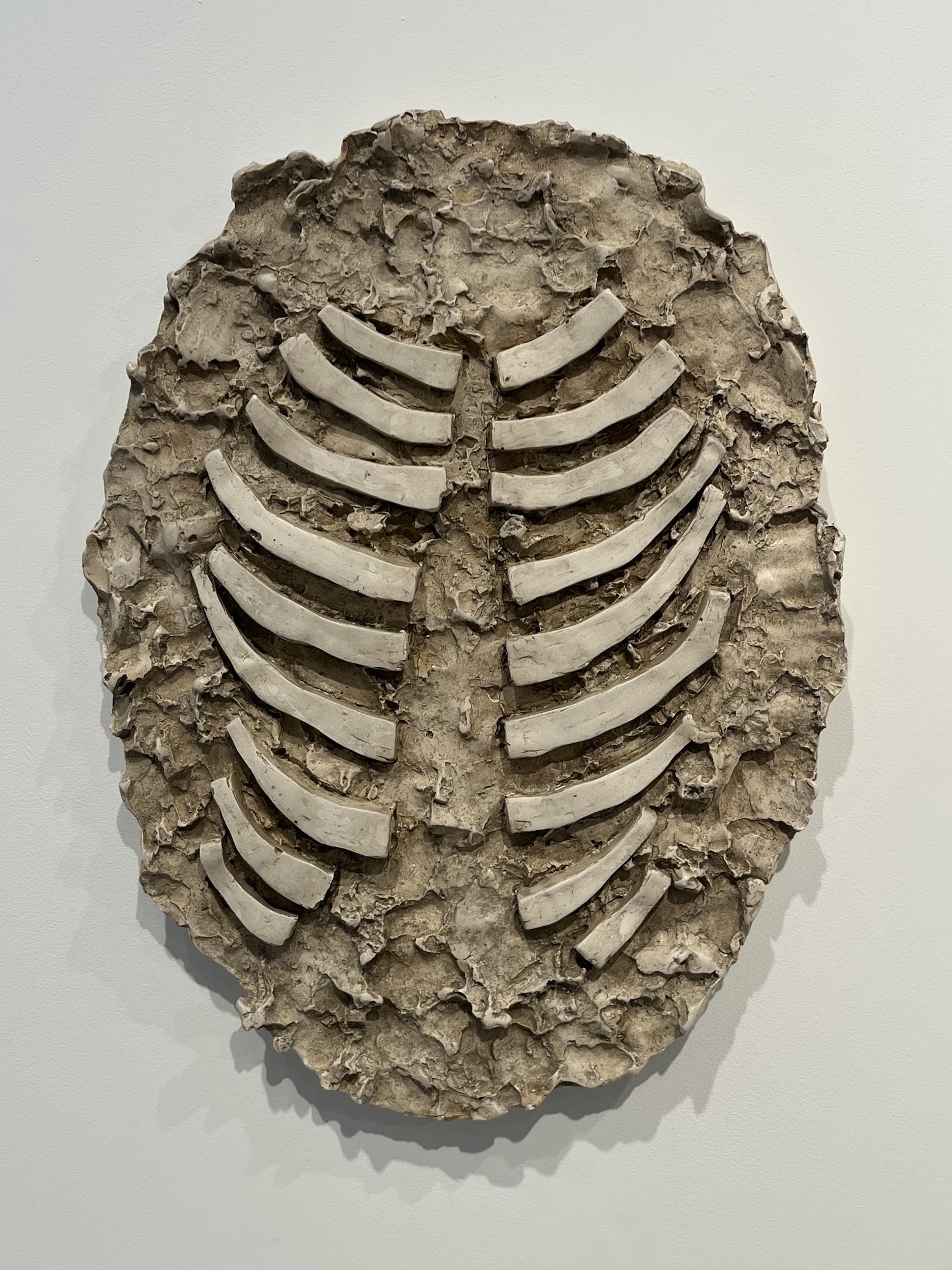
Eva Kmentová, Nepojmenov no (Hrudnjk), Unnamed (Chest), 1979, Plaster, 53 x 40.5 x 8 cm, Kmentová Zoubek Fund

Eva Kmentová, Ruce ( Hands), 1968 Plaster, 46.5 x 31 x 8.5 cm, Kmentová Zoubek Fund
Eva Kmentová (1928-1980, Prague) created sculptures on corporeal expression of trauma history. Often using casts of her own body, 'Ruce' (Hands) made in 1968 (end of the 'Prague Spring' by Soviet and Warsaw Pact Troops) shows the hands forming a surrender gesture, with the right hand covered with bullet holes.Her work is linked to the political uprisings in 1968, as well as fear of ageing, exclusion, neglect, and as a symbol of her illness.
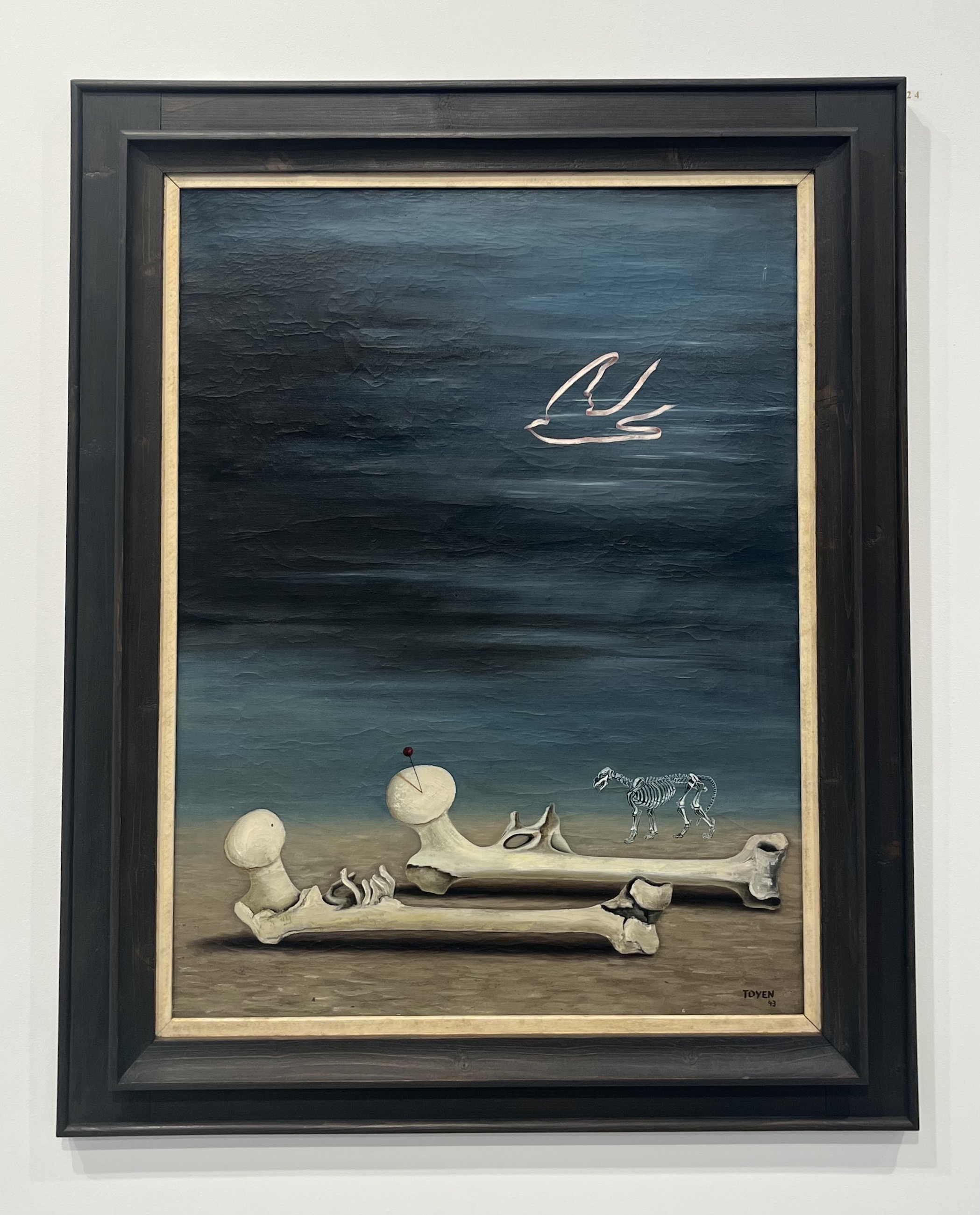
Toyen, Preji vám mnoho zdraví! (I wish you good health!), 1952, Oil on canvas, 87 x 66 cm, Galerie KODL / Milan Havel

Toyen, Portrét André Bretona (Portrait of André Breton), 1950, Oil on canvas, 50.5 x 67 cm, Galerie KODL / Milan Havel
Toyen (1902, Prague-1980, Paris), was a surrealist artist who experienced the feminist movement during the interwar period. Born Marie Čermínová, took in 1923, the gender neutral pseudonym of Toyen, and worked on gender issues and sexual politics, as well as founding Artificialism defined as "The identification of the painter with the poet" , where the visual artist creates poetry without using language. Toyen grew close to André Breton, and painted a portrait of him, as seen in the exhibition. During WWII and Nazi-occupation, the artist was forced underground and in 1938 sheltered the poet Jindrich Heisler. The painting also on view at the exhibition ironically titled 'I wish you good health' , done throughout the war years, speaks of devastation and trauma.
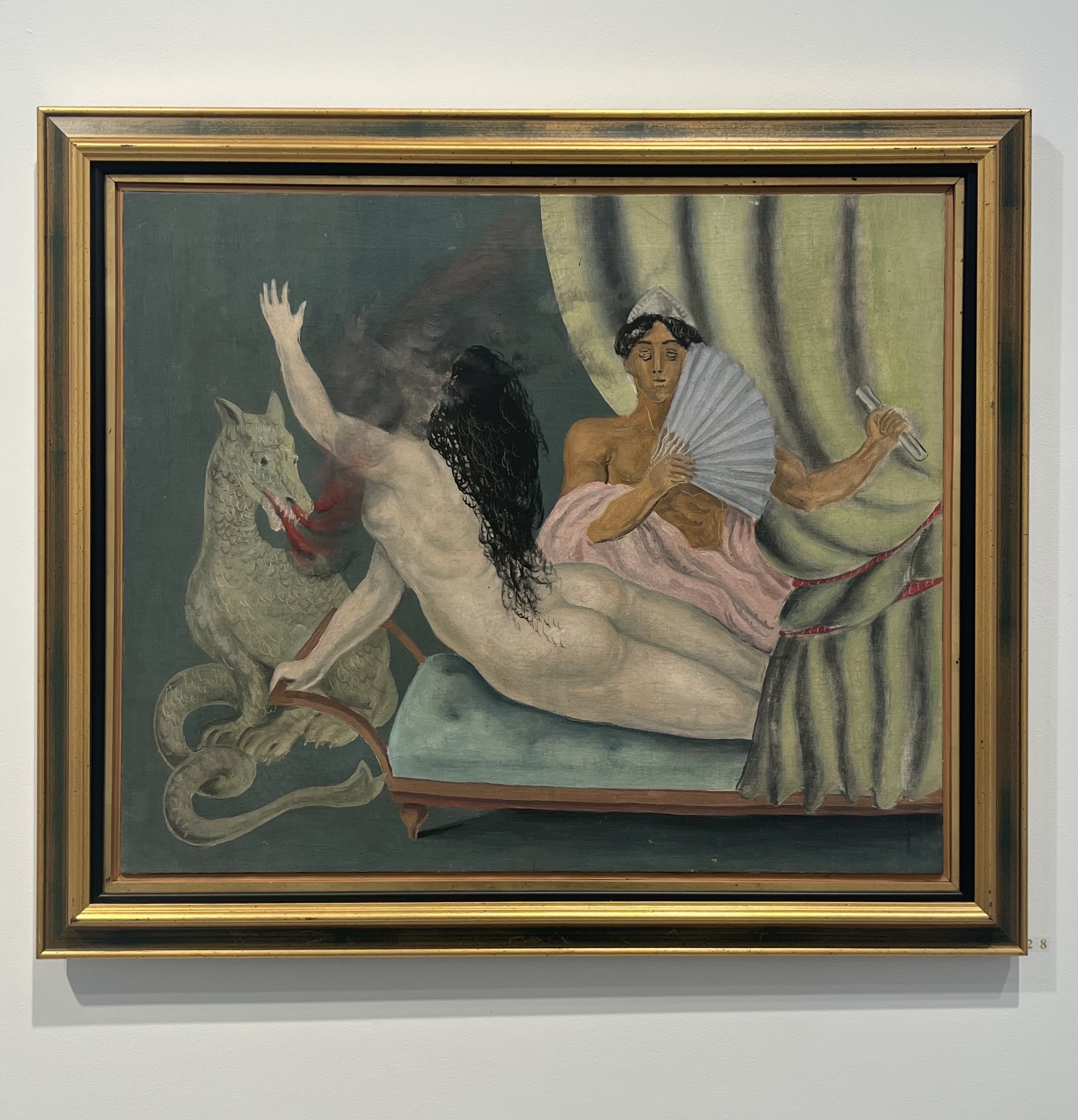
Milena Pavlović-Barili , Fantastic Composition with a Female and a Dragon, undated, Oil on canvas, 53 x 64 cm, Fondacija Milenin dom Galerija Milene Pavlović Barilli
Milena Pavlović-Barili (1909, Serbia - 1945, New York), leaves Europe in 1939 for New York, feeling sorrowful and melancholic in her new environment, longed for her home and family in Serbia as well as her time in Europe. She became a fashion illustrator to survive, and was part of Peggy Gugenheim's exhibition 31 Women Artists at the Art of This Century Gallery in New York, but was always tormented by the atrocities in Europe.
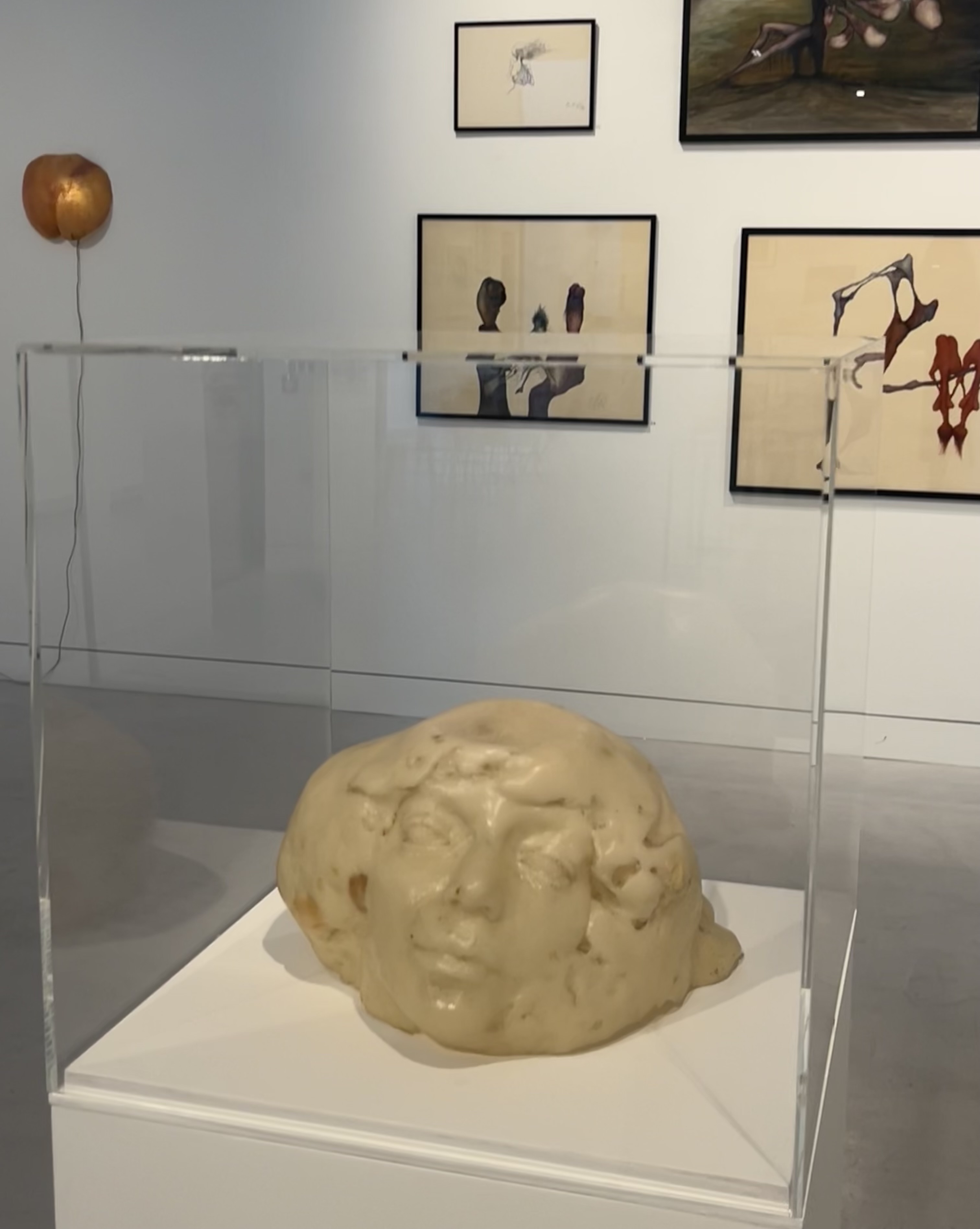
Alina Szapocznikow, Autoportrait (Self-portrait), 1971, Polyester resin and gauze, 18 x 29 x 28 cm, Galerie Loevenbruck, Paris and Hauser & Wirth and the Estate of Alina Szapocznikow and Herve Loevenbruck, Paris and Piotr Stanislawski, Paris
Alina Szapocznikow (1926, Kalisz - 1973, Paris), the 20 year old Jewish-Polish sculptor, headed to Prague to study after five years of being held in ghettos and camps. After returning to Poland, she became disillusioned by the Communist regime. Her sculptures became engaged with memory and trauma, and later in Paris her work reflected her existential challenges of her illness.
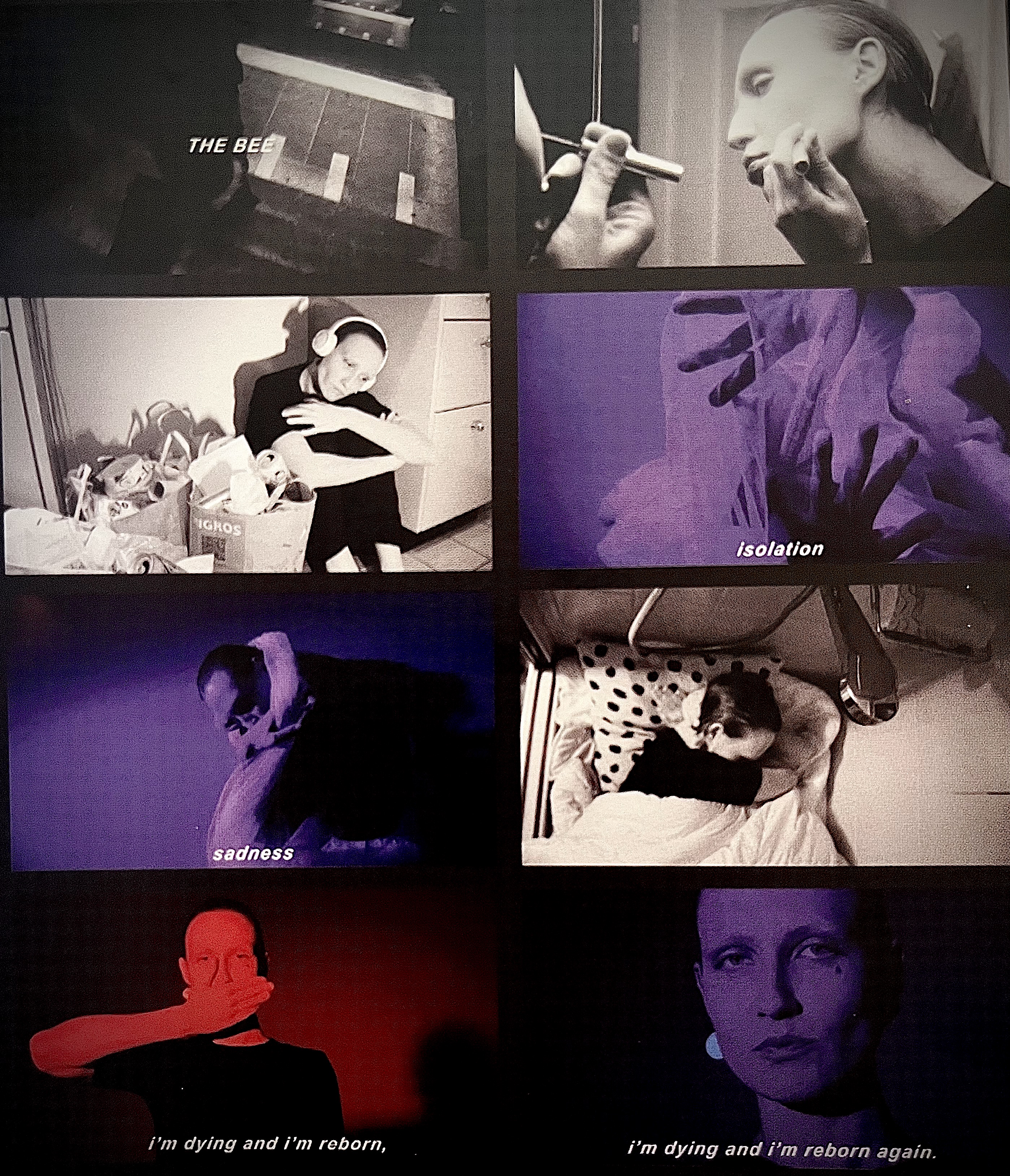
The Bee, 2023, Video, The Artists


Margo Litvinova, Oleksandra Tsapko, (1998, Ukraine and 2002, Ukraine), two artists currently living in Zurich working in film, painting and performance, reflect on the impact of war on their home country, Ukraine and on their lives. Their short film 'The Bee' is a "surrealistic exploration of the unbearable burden that every Ukrainian who was forced to flee their home with the outbreak of war experiences every day."
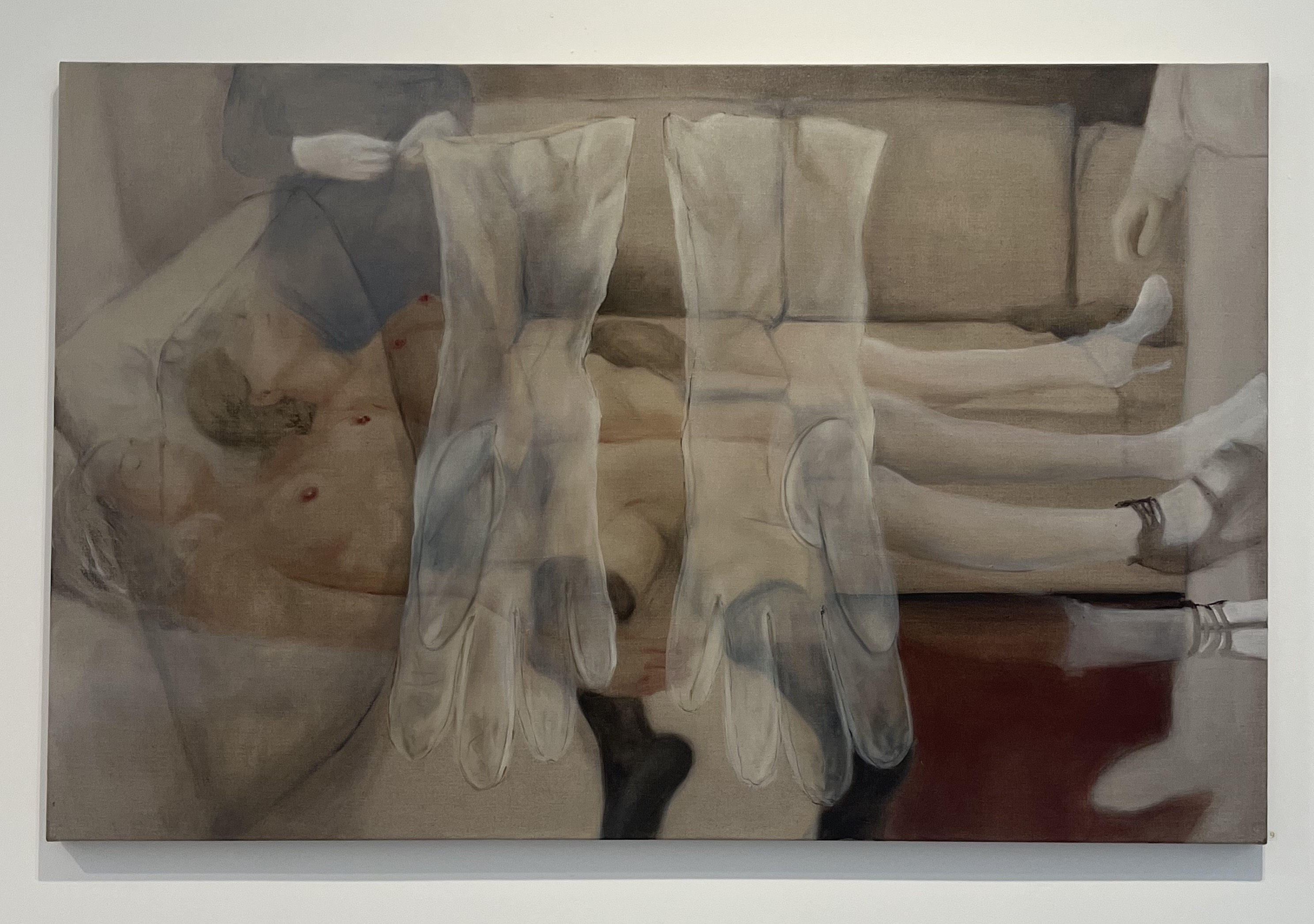
Joanna Woś', Untitled, 2022, Oil on canvas, 90 x 140 cm, Collection Helena Czernecka and The Artist, Wschód, Warsaw/Cologne
Joanna Woś's(1991, Poland/Vienna) paintings in surreal obscurity, where the female protagonists are the focus, not painted in regards to male desire, but as subjects taking center stage.
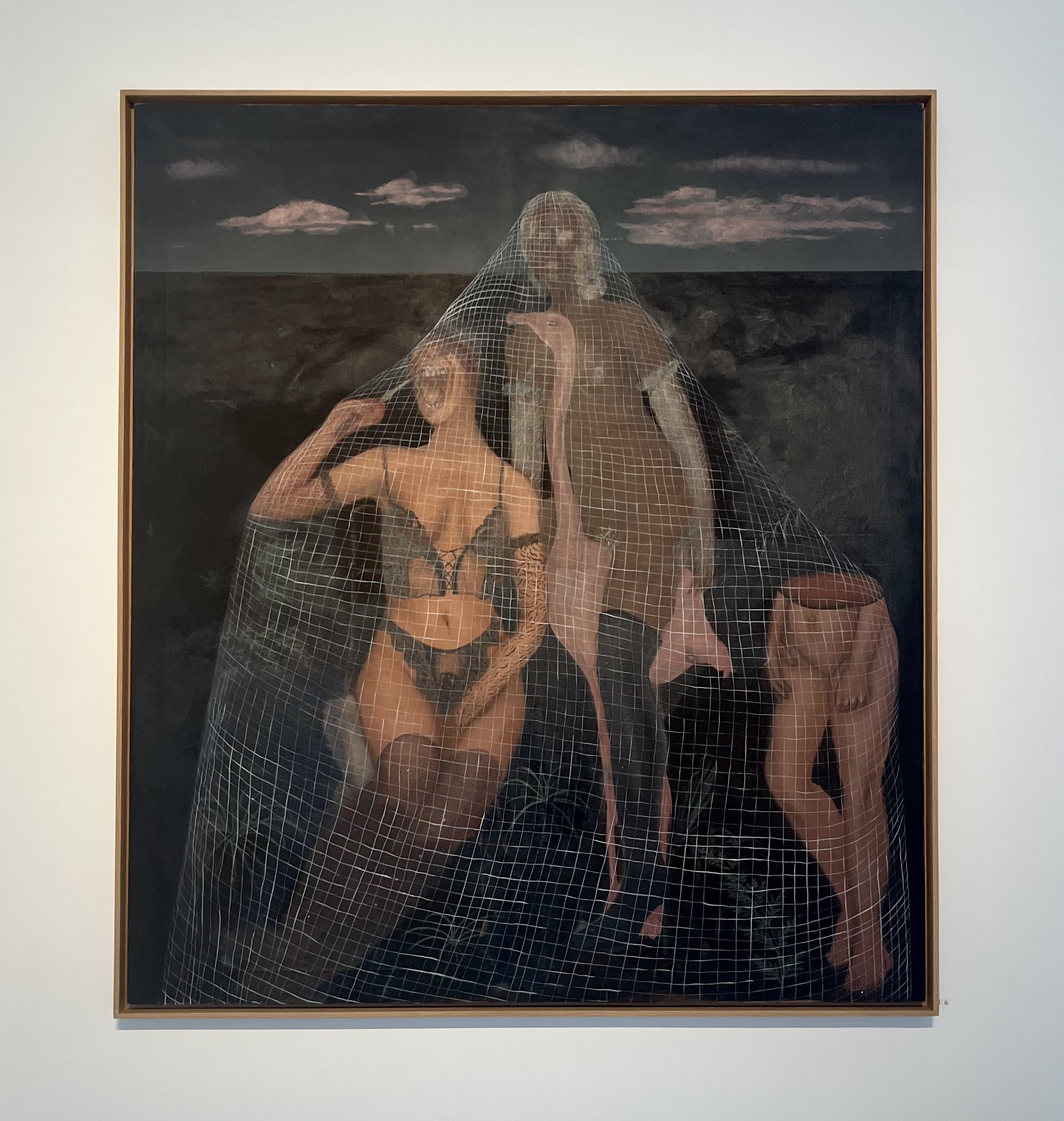
Hunting, 2021, Oil on canvas, 125 x 110 cm, Collection Tomasz Pasiek and The Foksal Gallery Foundation
Agata Stowak (1994, Poland) artistic surrealist topics "related to gender and feminism", and " to the role of ritual magic as alternative forms of knowledge transfer and community-making among women." Bodies in Renaissances poses are painted so, to show that human sexuality is not a modern phenomenon.

Stanislava Kovalcikova, Victoria Secret, 2017, Oil on Canvas, 200 x 150 cm, The Artist
Stanislava Kovalcikova's (1988, Slovakia/Düsseldorf), neo-Symbolist painting, with both Primitivist idols mythological creatures, speaks of harassment and abuse.
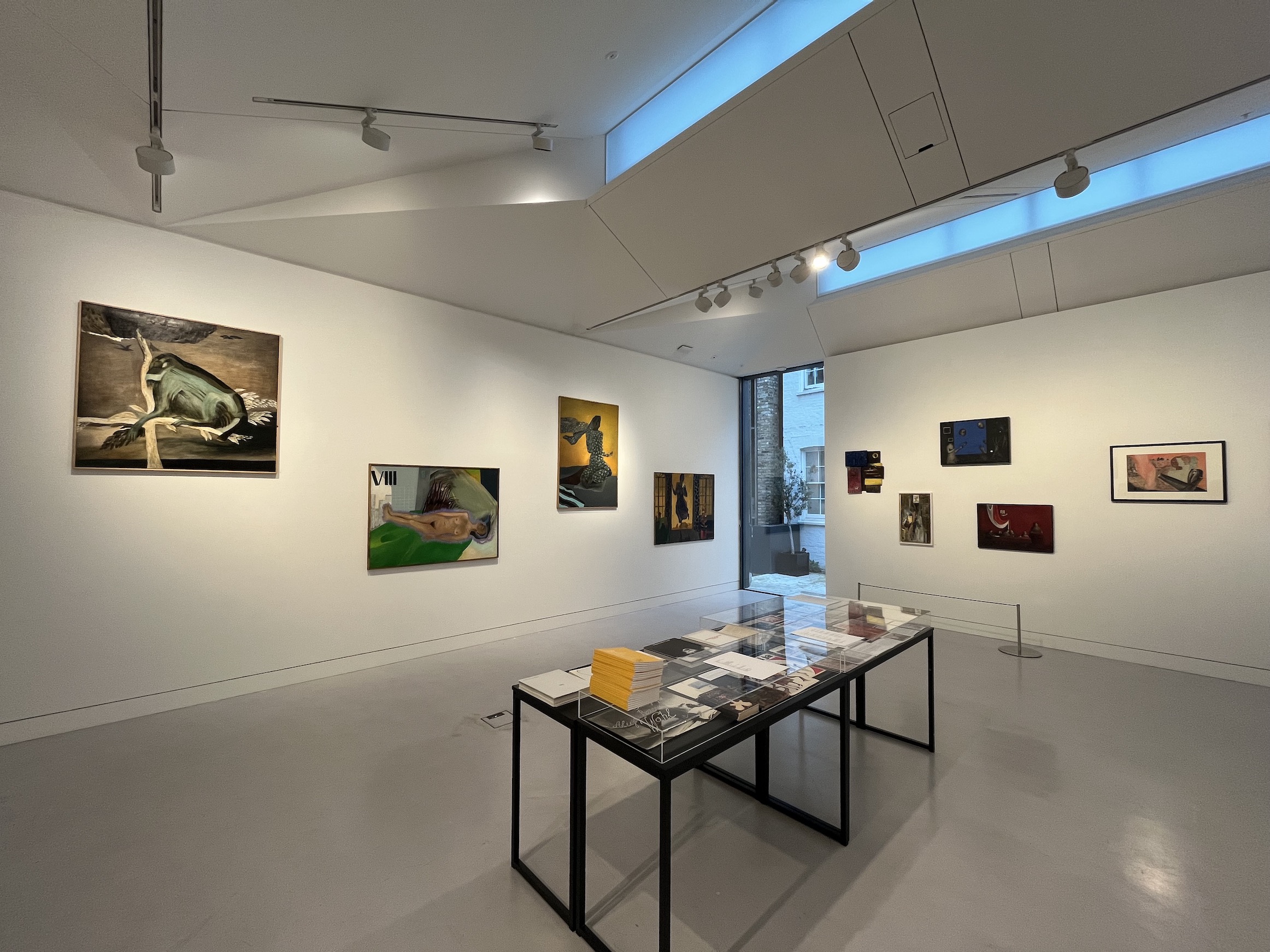
I saw the other side of the sun with you
April 12th 2023 – April 30th 2023 at Cromwell Place, London
European ArtEast Foundation is an independent not-for-profit art organisation. It supports art from Eastern Europe through commissioning and producing projects in partnership with institutions and organisations. Founded by Irmina Nazar and Artur Trawinski in 2017, with director Jonathan Tybel and chairman of the board Maria Rus Bojan as founding members, the foundation's vision is to increase visibility of contemporary art from Eastern Europe through exhibitions, residencies, research and publications. European ArtEast Foundation first project was Effigies of Life, A Tribute to Magdalena Abakanowicz (1930 – 2017), a retrospective exhibition showing over 120 works across multiple venues in Wroclaw, Poland, including outdoor public locations. The Foundation has a focus on encouraging the rediscovery of seminal Eastern European artists from the 1950’s and 1960’s alongside working with contemporary artists.
Anke Kempkes is an internationally active Curator, Art Historian and Critic. Her areas of expertise are: Female Avant-Garde, 20th century Abstraction Movements (Bauhaus, Concrete Art, Avant-Garde in Central and Latin America), Surrealism, Minimal Dance and Music Avant-garde in the U.S., Queer Modernism and Performativity.
Since her studies at the Courtauld Institute of Art in London she has published in international art publications and participated in numerous conferences. She has published on Alina Szapocznikow, Mária Bartuszová, Verena Loewensberg, Heidi Bucher, Evelyne Axell, Rosemarie Castoro, Wanda Czełkowska, Lydia Okumura, Teresa Murak, Teruko Yokoi and Stanislava Kovalcikova, among others.
She has held the position of Chief Curator at Kunsthalle Basel and Muzeum Susch, Switzerland. She is Lecturer at Zurich University of the Arts.
Lenders
MS Muzeum Sztuki, Lodz. Fondacija Milenin dom Galerija Milene Pavlović Barilli. Galerie KODL / Milan Havel. Collection Artur Trawinski. Themerson Estate. Ljiljana Blaževska Collection & Archive / Alison Jacques, London. Zofia Augustynska-Martyniak, Fundacja Rydet / Raster Gallery, Warsaw. Kmentov Zoubek Fund. Zuzanna Janin archive / lokal_30, Warsaw. The Estate of Alina Szapocznikow / Hauser & Wirth. The Estate of Erna Rosenstein / Adam Sandauer / Hauser & Wirth and Foksal Gallery Foundation. A.B. Wahl Foundation / lokal_30, Warsaw. Tomasz Pasiek collection / Foksal Gallery Foundation, Warsaw. Collection Tomasz Żmigrodzki / Foksal Gallery Foundation, Warsaw. Wschód, Warsaw/Cologne. Collection Lin Zhang, London. Margo Litvinova and Oleksandra Tsapko. The Akeroyd Collection, London / Foksal Gallery Foundation
Special Thanks to Hauser & Wirth Galleries, UK and Zurich and to the Polish Cultural Institute, London.
